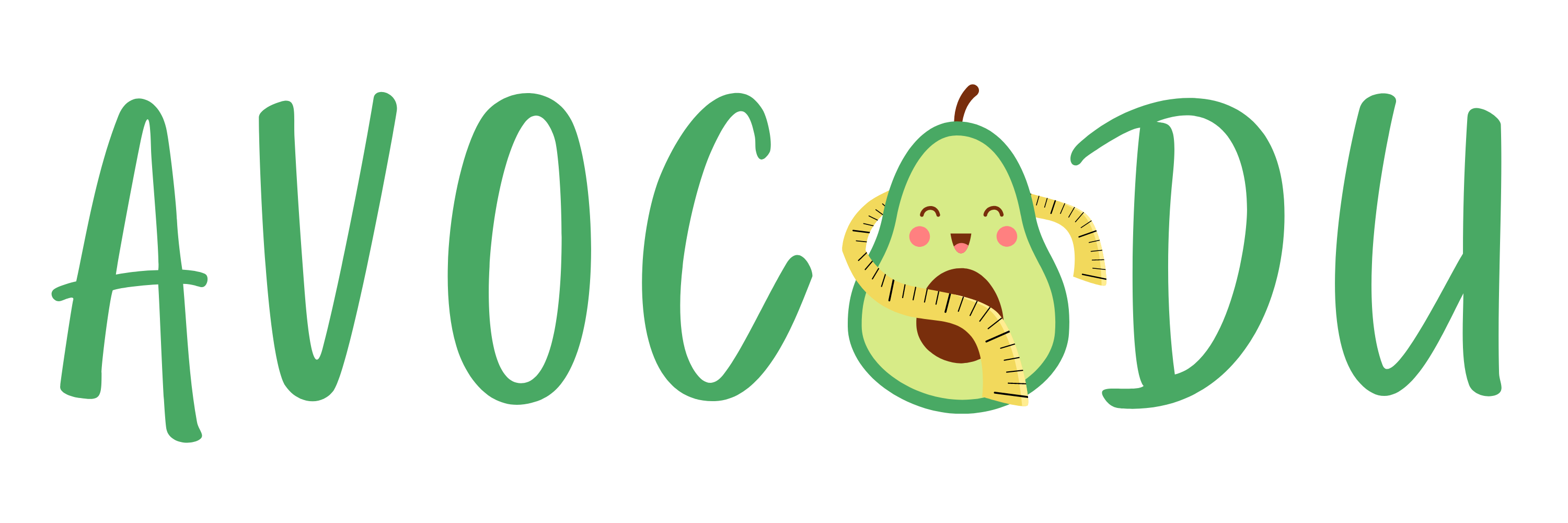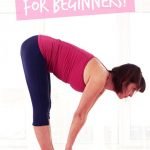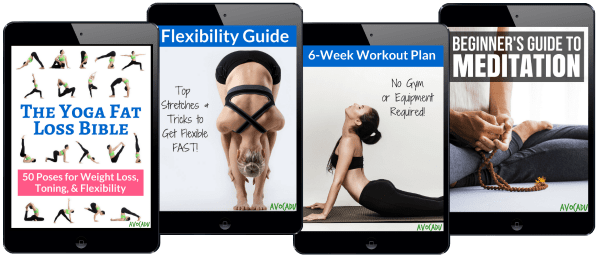Top 5 Yoga Poses for Beginners
The best way to get the most out of yoga is to choose a workout that matches your ability and flexibility, and you’re going to want to make sure these top 5 yoga poses for beginners are part of it!
When you find the right fit, you’ll fall in love with this gentle but powerful form of exercise—and all of its health benefits.
Let’s start with what yoga isn’t. Yoga isn’t about working out until you’re exhausted or pushing yourself to the point where it begins to hurt.
Rather, yoga is about improving your flexibility and balance.
And along the way, you’ll reduce stress and boost your fitness level and strength.
The key with yoga is starting slow and listening to your body. It takes time to get your muscles used to the moves that will improve your range of motion.
The best workouts for beginners include poses that will gently stretch your muscles and reduce tightness.
Even though they may look easy, these moves pack a wallop when it comes to improving your functional fitness, according to a study by the University at Illinois at Urbana-Champaign.
This post may contain affiliate links, which helps keep this content free. Please read our disclosure for more info.
1. Mountain Pose
The mountain pose is one of the foundational asanas in yoga. An asana is a Sanskrit term for posture.
You’ll see it as a warm-up pose and part of a Sun Salutation Series or Surya Namaskara in Sanskrit. It is a sequence of 12 poses or asanas that is traditionally done in the morning, facing the rising sun.
This pose is deceptively easy. You begin by standing tall with a straight spine.
Your big toes should touch. But if you find it difficult, you can keep your feet apart slightly.
Keep your arms at your side with your palms facing outward. Hold the pose for at least 30 seconds, working your way up to a full minute.
The mountain pose will improve your posture and balance while strengthening the muscles in your lower body.
See the move here.
2. Forward Fold Pose
The forward fold pose builds on the foundation of the mountain pose to take your practice to the next level, and it’s also a relatively easy asana for a beginner yogi.
That is the hallmark of yoga. It’s safe while providing an excellent workout without the emphasis on strength building and cardio like other types of exercise.
To do the forward fold pose, begin in mountain pose with your hands on your hips. Then, bend forward from your hips, not your waist as you exhale.
Place your hands where it feels comfortable, by your feet or keep your arms folded. If you’re really flexible, you can grasp your ankles.
If you find the pose difficult, you can bend your knees slightly, taking care to keep them soft rather than locked. As with the mountain pose, begin with 30 seconds and work toward holding the position for a full minute.
Of course, you should avoid doing this pose if you have back problems, explains Yoga Basics. You’ll find this asana very calming and a good way to relax.
It will strengthen your lower body and loosen tight muscles in your legs.
See the move here.
3. Downward Dog Pose
The downward dog pose or downward-facing dog is the quintessential yoga pose. Even people who don’t follow a regular practice will likely recognize it.
Like the other asanas we’ve considered, it is also a part of a traditional Sun Salutation Series.
Begin by kneeling on all fours on your mat.
Your knees should rest directly below your hips. Place your hands with your fingers spread slightly forward of your shoulders.
Then, inhale and exhale as you lift your knees from the mat. Keep them bent as you raise your buttocks upward.
Slowly straighten your knees, keeping them soft. Make sure your head stays between your outstretched arms as you tighten them.
Keep your shoulders wide. Stay in this position for at least one minute, working your way up to two or three minutes.
The challenge with this pose is getting your heels to the floor. Beginners may stay on the balls of their feet.
You can keep your knees bent during the move until you can build on your flexibility to get them flat on the mat. This pose is excellent simply because it works so many muscle groups.
It will challenge your upper and lower body as well as help you with balance and flexibility.
Modifications with poses allow you to stay within your ability, explains Dr. Rachel Rohde, a spokeswoman for the American Academy of Orthopaedic Surgeons.
See the move here.
4. Plank Pose
You may be surprised to learn that plank pose is better for your core muscles than doing crunches. It’s also a safer move that is less jarring for your back.
It’s an excellent asana to use with downward dog pose. For our purposes, we’ll begin there and move into plank pose.
Inhale as you lower your buttocks to put your torso in a flat position. Your arms should rest directly above your hands.
Keep your head straight as you look down toward your mat. Start by aiming to hold the pose for 30 seconds, working your way up to a minute or longer.
Plank pose like other basic yoga moves is excellent for the beginner, according to Mayo Clinic. While these moves look easy, they show that the power and benefits of them come from holding them for several moments.
Plank pose will tone your entire abdomen as well as strengthen your arms and spine.
See the move here.
5. Low Lunge Pose
The low lunge pose is a great move for runners and hikers because it stretches the groin and thigh muscles. These muscles often get tight after strenuous workouts.
Like the other poses, it is also a part of the Sun Salutation Series. You can do this pose from downward dog or as a transition from plank pose.
You’ll find many yoga moves go smoothly from one to the next which adds a rhythm to your workouts. Along with using your breath to guide your movements, you can easily build a practice to suit your needs.
We’ll begin in downward dog pose. Our transition into this pose will demonstrate how a sequence works.
As you exhale, bring your right foot between your hands, keeping your gaze on the mat. Keep your right knee straight over your heel and avoid letting it go past this position.
Lower your left knee to the mat, sliding it back. You’ll feel the stretch in the front of your left leg.
Hold the pose for a minute or as long as it is comfortable for you. To work the other side, return to downward dog pose.
Follow the same procedure putting your left foot between your hands and your right knee on the mat.
See the move here.
These moves include some of the basic poses that provide the foundation for more challenging yoga asanas.
As with most yoga positions, modifications can make each asana accessible to the beginner so that you can fully experience the pose.
When you master them, you’re well on your way to building a fulfilling practice!
If you are looking for more beginner poses and tips to transform your body with yoga, our Yoga Fat Loss Bible for Beginners is a great place to start!
It comes with everything you need to get started, including a complete 6-week workout plan, a flexibility guide, and a beginner’s guide to meditation!
It’s a great solution around for those looking to lose weight, get more flexible, and relieve aches and pains with a calm yoga practice.
It will show you exactly how to melt away stubborn body fat with a regular yoga practice and has the top 50 fat-burning yoga poses every beginner should learn.
You can check it out by clicking here.
Always remember that the most difficult part of doing yoga SHOWING UP. Make sure to show up today and give your best to this workout. You deserve it!
Leave a comment below if you enjoyed this article on the top 5 yoga poses for beginners or have any questions!



Nasamte
corpse yoga pose is also simplest and basic for beginners. can you include this in your list.
I tried these 5 poses, It quite suitable for beginners..